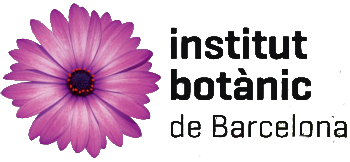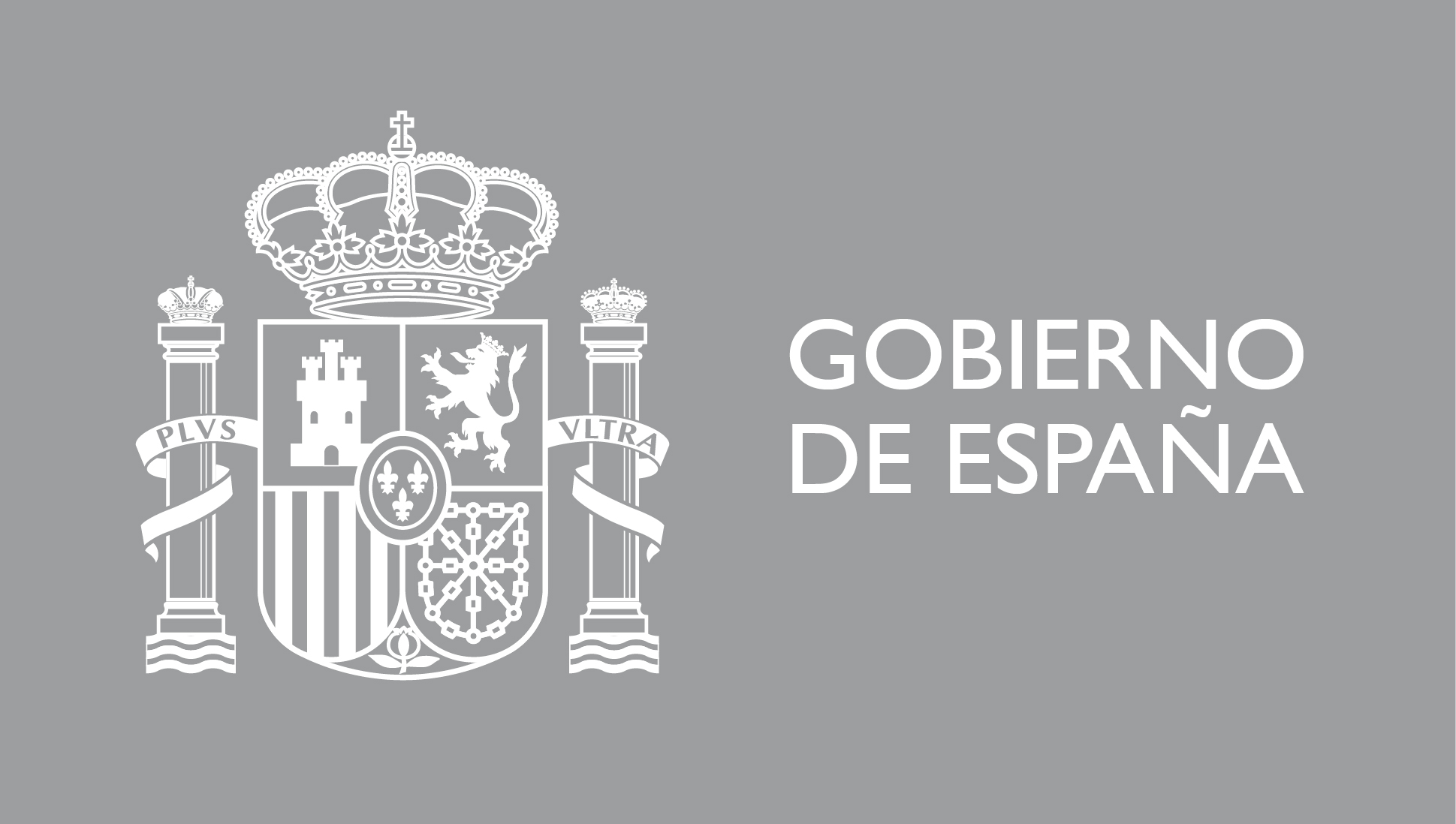Floristic diversity associated with the chrysomelids of the tropical dry forest of Nicaragua: donation to the IBB Tissue Bank
Between 2009 and 2012, Dr. Jesús Gómez-Zurita carried out a project funded by the BBVA Foundation (BIOCON08 191/09) to study the diversity of Chrysomelidae beetles of the tropical dry forest of Nicaragua and of their host-plants. The project was also a joint effort of international cooperation between the team led from Spain with researchers from Greece, Ecuador and Portugal, and a team of entomologists and botanists from the León branch of the National Autonomous University of Nicaragua (UNAN).
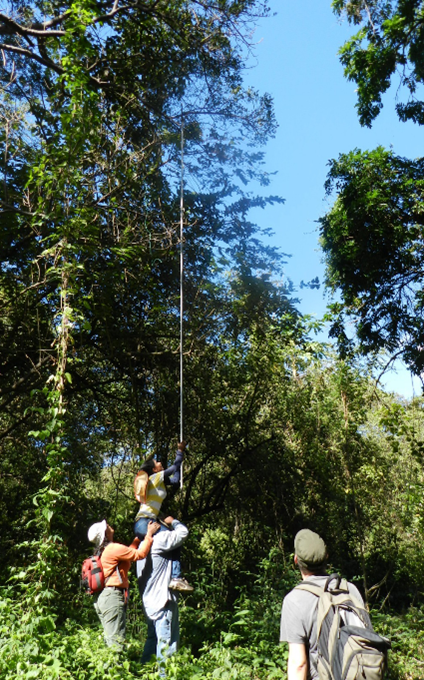
Botanists from the National Autonomous University of Nicaragua, Ricardo Rueda and Indiana Coronado, help Jazmina Reyes, under the watchful eye of Jesús Gómez-Zurita, to access with long telescopic pruning shears to flowers from the canopy, which could allow the taxonomic identification of the trees. Natura Reserve, Montelimar, Managua, Nicaragua. Source: A. Cardoso.
The main objective of this project was to produce a rapid inventory, through the study of DNA sequences, of both the beetle community and the diversity of their diets. The latter was achieved using the PCR technique and specific primers of portions of the chloroplastic genome on DNA extractions from the whole body of the insects, with the specific aim to amplify and selectively sequence plant DNA remains present in these extractions and presumably coming from the food ingested by each specimen. The information from these DNA sequences should allow the taxonomic identification of these diet plants as long as they could be compared with a reference library for this same DNA fragment from the regional flora. One of the objectives of the project was generating this library, thus the plant diversity of the tropical dry forest in Nicaragua was sampled indiscriminately to obtain tissues from which to generate DNA sequences that could be compared and allow the identification of those obtained from insect diets. During the course of the project, a sequence library of the psbA-trnH fragment was targeted for 437 plant species present in the tropical dry forest (GenBank references: HG963487-HG964039); technical details of this research are available in Papadopoulou et al. (2015).
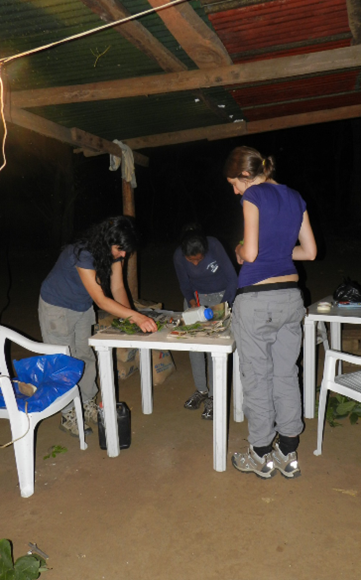
Anabela Cardoso and Anna Papadopoulou learn from Jazmina Reyes the preparation techniques of plant tissue samples for the project and help her with the huge amount of samples collected during the day, which will end up being part of the UNAN Herbarium and the IBB Tissue bank for DNA extractions. Reserva Natura, Montelimar, Managua, Nicaragua. Source: J. Gómez-Zurita.
PTo achieve this goal, Dr. Gómez-Zurita’s laboratory generated a resource of hundreds of plant tissue samples from the flora of the tropical dry forest of Nicaragua, many of them identified to the species level by the project collaborator, Indiana Coronado (UNAN-León). Most of the samples are associated with an herbarium sheet from her institution, and a good part of the psbA-trnH sequence data are deposited in GenBank. This resource and its metadata have been donated to the BC herbarium of the Botanical Institute of Barcelona (IBB) and are available for future genetic research.
The donation was incorporated into the herbarium’s Tissue Bank, a collection that was created as a result of the need to ensure the viability and conservation of plant tissue samples from the different IBB research groups, to support biodiversity and evolution studies (phylogeny, biogeography, phylogeny and conservation) and manage the accessibility of the samples to the scientific community. This collection is characterized by containing samples of foliar plant tissue of higher plants and is currently physically segregated from the general collection due to the nature and purpose of the use of its specimens.
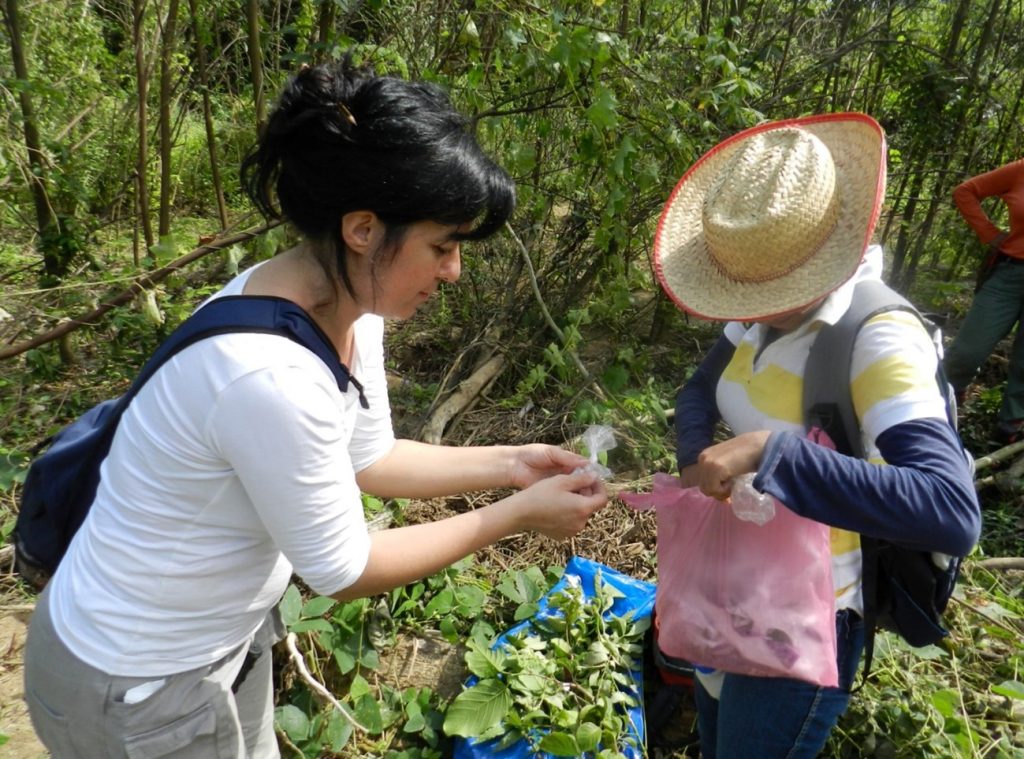
Anabela Cardoso and Jazmina Reyes collect, prepare and store plant tissue samples in the field for future DNA extractions in the laboratory. These samples were used to obtain hundreds of sequences of the psbA-trnH intron of chloroplastic DNA and are part of the BC Herbarium Tissue Bank (IBB) for research use. Reserva Natura, Montelimar, Managua, Nicaragua. Source: J. Gómez-Zurita.
Each sample was databased using Herbar, a botanical collection management application including some functions of the Elysia application (both developed by the GBIF Spanish node). Once databased, the samples were labelled with a barcode and with the collection’s own label, achieving a total of 948 samples.
The most abundant genera, with more than ten samples per genus, were: Ipomoea, Cordia, Piper, Pithecellobium, Senna and Solanum. The best represented species, with more than five samples per species, were: Aphelandra scabra (Vahl) Sm., Baltimora recta L., Casearia corymbosa Kunth, Ipomoea splendor-sylvae House, Lantana urticifolia Mill., Malvaviscus arboreus Cav., Piper alamago L. and Rivina humilis L..
More information:
Papadopoulou, A., Chesters, D., Coronado, I., De la Cadena, G., Cardoso, A., Reyes, J.C., Maes, J.-M., Rueda, R.M. & Gómez-Zurita, J. 2015. Automated DNA-based plant identification for large-scale biodiversity assessment. Mol. Ecol. Res. 15: 136-152. doi: 10.1111/1755-0998.12256

